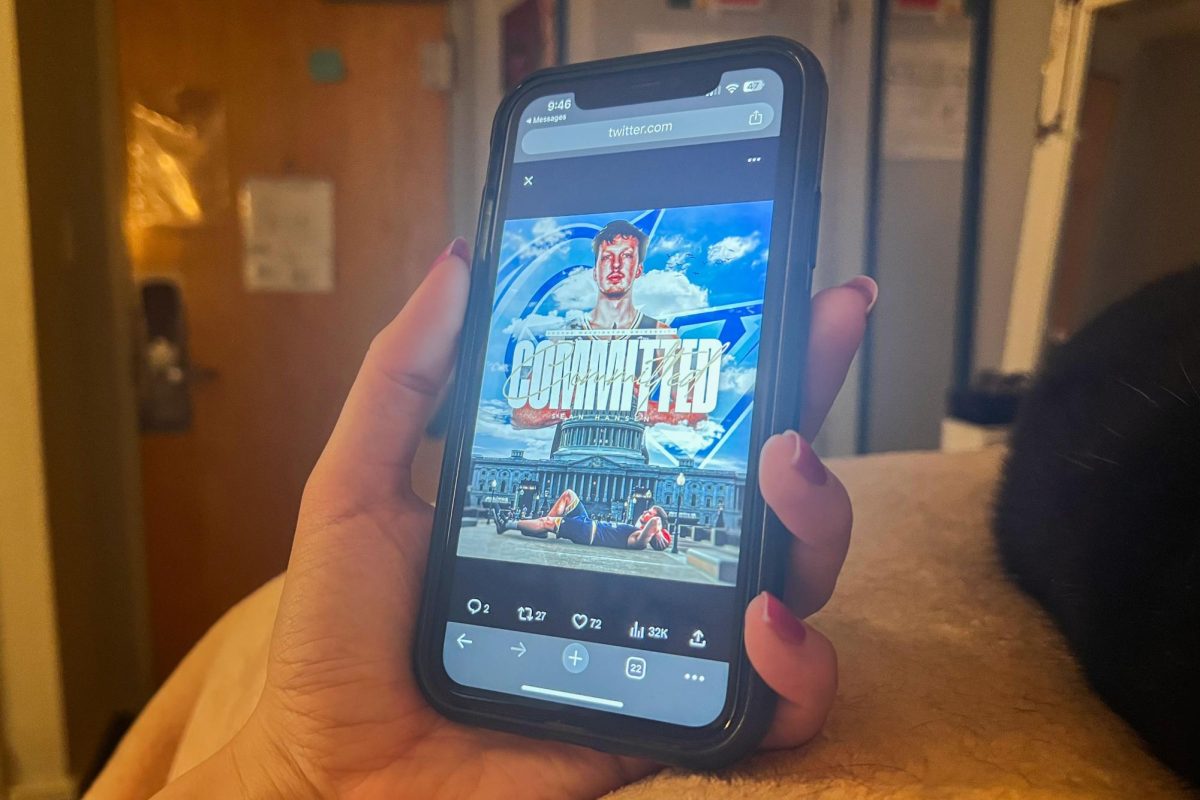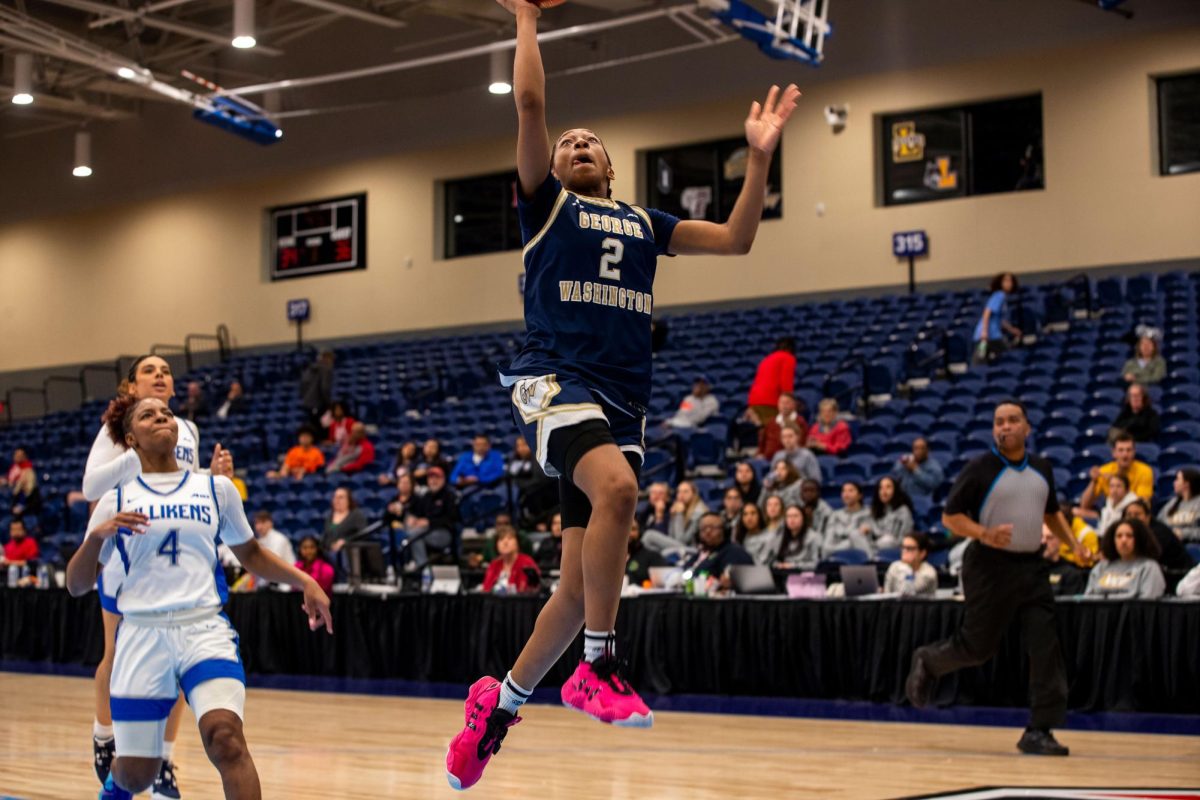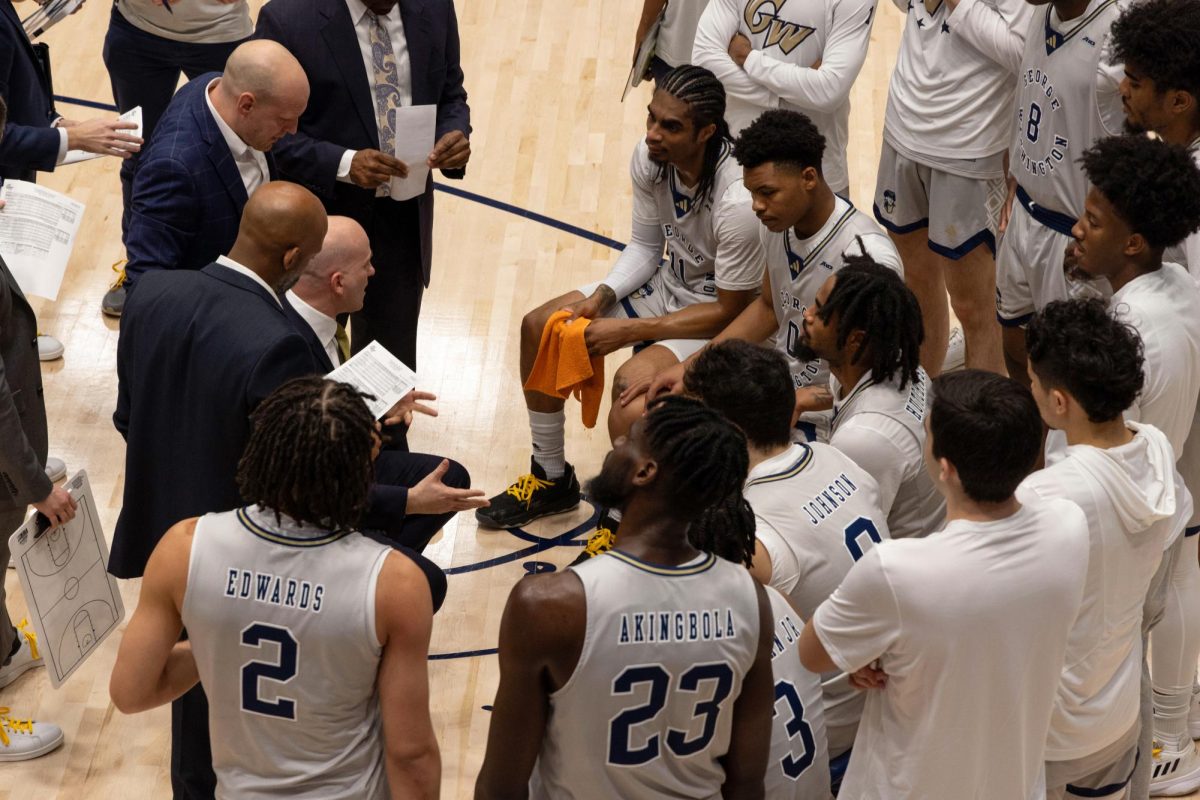When the men’s water polo team travels to Claremont, Calif., Oct. 4 for the annual Claremont Convergence tournament, they will do so with lighter pockets.
Like many GW sports programs, the water polo squad does not get funding for such trips. Members of the squad said the team’s University funding only covers equipment and travel to conference games. Many sports teams are facing funding issues that require them to find their own means of supporting out-of-conference trips.
Since the team failed to raise sufficient funds for the trip this year, players were asked to pay for their own airfare and lodging, totaling $430 each. In previous years, the team had successfully raised enough money by doing things such as serving as crowd control at concerts and other sporting events.
But the team did not make the effort to fundraise for this year’s trip, coach Scott Reed said. Reed noted that if any player could not afford the trip, the team would not play in the tournament.
“I leave it up to the players to come up with ways to fundraise,” Reed said. “Last year they didn’t make much of an effort. If they want to have it paid for, they need to come up with ideas.”
Sophomore Julie Jacoby said that last year the women’s water polo team held a “swimathon,” in which benefactors pledged money to the players based on how many yards they swam, in order to pay for the team’s trip to Claremont last year.
“Nobody seems to care besides us, our parents and our coach,” Jacoby said. “There isn’t really anything Coach Reed can do to get more money.”
Jacoby’s father Joe, a dedicated fan who travels to all of the team’s competitions, said he was surprised to find out that the trip was not covered by the athletic department. Joe Jacoby and Sybille Whittam, mother of sophomore goalie Chris Whittam, are trying to organize ways to supplement the season’s extra expenses, which will likely approach $800 per player. One method they plan to exhaust is to ask for alumni donations.
Senior Associate Director Athletics Mary Jo Warner said the tournament in Claremont is “not a necessary trip,” and therefore is not paid for by the school. She notes that the women’s soccer team successfully raised enough money to travel to California.
“When teams travel out of region, they either fundraise or have to pay for themselves due to budget limitations,” she said. “Although we fund the majority of trips, some trips require fundraising. This is typical of most universities in the United States.”
An exception to the rule is the men’s and women’s basketball teams. Due to their ticket revenue and other income brought to GW, the squads are able to take comparatively expensive team trips, although Warner stressed that the extra money brought in by the basketball program is distributed throughout the athletic department.
“Basketball teams are exceptions in the sense that they don’t have to go out and fundraise, but the truth is with basketball we get some funds that not everybody else gets so it allows us to do some things and gives us operating room,” Director of Athletics Jack Kvancz said.
This summer, the men’s squad took a University-funded trip to Australia. In addition to a new court added this summer, the basketball team enjoys a new scoreboard estimated at approximately $600,000.
The water polo team’s facilities are also not up to par with other sports facilities, such as the basketball court. The pool at the Smith Center is outdated and smaller than a regulation NCAA pool, measuring 25 yards, with a shallow end, as opposed to the 30 meters and equally deep all the way across.
Funding for scholarships is separate from the operational budget each program is given, Reed said. Players’ benefits include partial scholarships, access to athletic facilities such as the Smith Center’s weight room and access to a student-athlete support system. Reed and Warner declined to comment on the monetary specifics of the scholarship allocation process.
“Scholarships are awarded based on experience and what the player can bring to the program,” Reed said. “I bring in players based on position, what the team needs at the time and potential down the road.”
Reed said that although the Claremont trip is not vital, it is a good experience for players and helps support the water polo program. Reed said that because water polo is not very popular in the mid-Atlantic states, it is important to get GW’s name out in places such as California, where the sport is much more popular. Additionally, it gives the team an opportunity to see competition outside of the Atlantic 10.
The competition comes at a hefty price though, one which Sybille Whittam, the mother of a water polo player, wished she knew about beforehand.
“I would have assumed that as a Division I school that there would be funding to get them to their tournaments,” Sybille Whittam said via e-mail.
She added, “These athletes are asked to come out two weeks before classes to train for the benefit of their team and university. The expenses should all be spelled out well in advance so parents and the team as a whole can prepare for such expenditures.”







